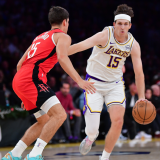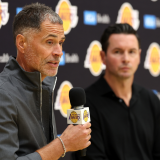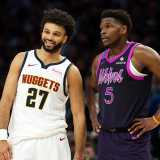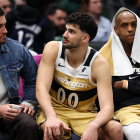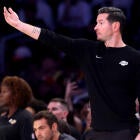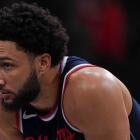NBA early-season observations: Stephen Curry is doing everything, positive Knicks vibes
Also: Keldon Johnson is always in attack mode, Dillon Brooks is stretching his game and Steven Adams is indispensable
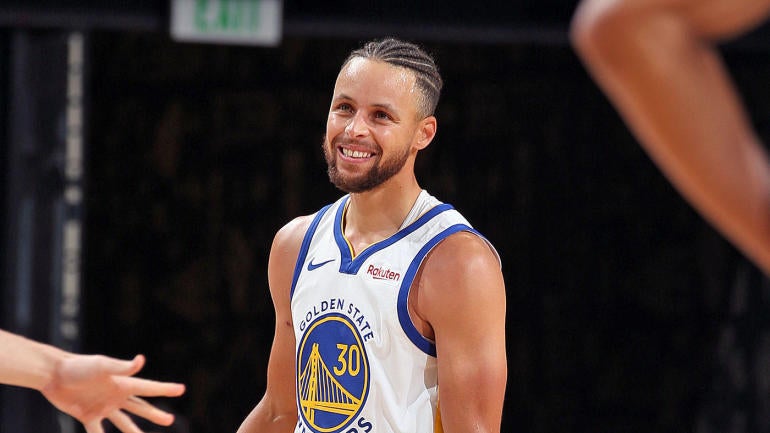
The Philadelphia 76ers entered Thursday's game against the Brooklyn Nets with the best record and best defense in the NBA. Without Kevin Durant, Kyrie Irving and Spencer Dinwiddie, the Nets proceeded to beat them by a score of 122-109, a strange result in a season that is already full of them.
It is too early to make sweeping, definitive judgments about teams, but it's a good time to look at trends, changes and oddities. Following up on Wednesday's observations, here are, uh, more observations.
Steph is everywhere: Stephen Curry made only (ha) eight 3-pointers in his 62-point game. He set his new career-high in scoring by going 18-for-19 from the free throw line (thereby setting new career highs in free throws made and attempted) and making 10 shots from inside the arc (for only the sixth time in his career). This performance was an outlier in terms of sheer volume, but it is also a reflection of his approach to his new environment.
Curry's usage rate is a career-high 31.9 percent, and he's running much more pick-and-roll for obvious reasons. What's interesting, though, is that, at 32 years old, in his 12th season, he is being so aggressive. He is averaging 10.8 drives per game, easily the most he has averaged since NBA.com started tracking them in 2013-14 (and 3.1 more than he averaged two seasons ago). In 2018-19, almost half of his made shots at the rim were assisted, per Cleaning The Glass, a result of his off-ball movement rather than his playmaking. This year, only a third have been.
Thanks largely to that 18-for-19 game, Curry's free throw rate is higher than it has ever been. I'm curious to see whether that holds up.
Damian Lillard wasn't wrong when he said that "it's different than what it's looked like over the last four or five years" for Curry. That doesn't mean, however, that Curry will be any worse for it. The two-time MVP got a taste of his new team context in the five games he played last season, and it appears he has made some adjustments.
Some positive words about the Knicks: I have no idea if Julius Randle can keep up his insane production, but hot damn. Per 36 minutes, the dude is averaging an efficient 21.6 points, 6.9 assists (!) and 11.2 rebounds. If the assist rate holds up and the Knicks remain halfway decent, he could be an All-Star.
The most impressive stat: He has assisted on 28 3-pointers, which ranks sixth in the league. Only LeBron James and Nikola Jokic have assisted on more corner 3s. Some of this feels flukey -- several of his teammates have had unsustainably hot starts from deep -- but New York's offense is clearly much more organized than it was last season.
While I'm saying nice things about the Knicks, I'll add that I like rookie Immanuel Quickley's touch. Look at his floater game:
And in a beautiful bit of small-sample-size theater, Austin Rivers is currently the most efficient isolation player in the entire league:
This seems as good a time as any to remind you that, after scoring 41 points against the Sacramento Kings in the bubble, Rivers called himself a "premier scorer."
Attack mode: If you're not watching the San Antonio Spurs, you're missing out on Keldon Johnson. The second-year forward is fearless to the point that I worry a little bit about him getting injured. Johnson is 6-foot-6 but looks bigger than that because of his long arms and his ability to take contact. He will attack the rim with force regardless of who is in his way:
The Spurs have become a drive-and-kick team this season -- they are second to only the Jazz in drives per game, according to NBA.com. DeMar DeRozan leads the team in that category (and is among the league leaders), but they put pressure on defenses because Johnson, Dejounte Murray and Lonnie Walker -- all athletic slashers -- are all looking to get into the teeth of the defense. Right now, Johnson is the most entertaining of the bunch.
It just works: As expected, Marc Gasol has been a breath of fresh air for the Lakers' offense. Entering Thursday's game, they had scored 119.8 points per 100 possessions with him on the court and 128.8 per 100 with LeBron James alongside him. Who wouldn't want to play with someone who spoonfeeds you layups and dunks like this?
The funny thing is that Gasol is doing far less than ever before. His usage rate is down to a comically low 9.4 percent, and he's only taking 2.6 shots a game. I commend Gasol for his transition from a primary offensive option to a pass-first, -second and -third facilitator, but I'd like to see him be a bit more involved. Good things happen when he touches the ball.
On the other end of the usage spectrum: Dillon Brooks' usage rate is up to 27.1 percent this season, which is the same as Jokic's. This is not an ideal situation for the Grizzlies, but, with Ja Morant, Jaren Jackson Jr. and Justise Winslow out of the lineup, Brooks has needed to be even more of a playmaker than he was last season.
His efficiency has understandably suffered, but his assist rate is way up. Both would be higher if Memphis had better shooters around him.
Checking in on the Pistons' big signing: The glass-half-full view is this: Jerami Grant is playing a massive role in Detroit's offense, and he has been much more productive in it than experts predicted. His 54.3 true shooting percentage isn't great, but it's not terrible considering he has a 29.3 percent usage rate. He has averaged 24 points in 36.3 minutes, and he's launching 3s way more frequently than ever before. Even when he's being guarded by the Defensive Player of the Year, Grant's confidence is there:
A more skeptical view: It is not a coincidence that a team relying on Grant this much is 20th in offense. He is shooting 13-for-40 from midrange and no opposing team is worried about him taking pull-up jumpers.
And finally, the moderate view: the Pistons are bad, and after investing so much in Grant, they might as well see if he can be the player he wants to be. It's been a bit of a mixed bag so far, but it's still early. As a driver, he has been effective. As a shooter, not so much.
Checking in on the Pelicans' big acquisition: Steven Adams wasn't the most popular addition of the offseason, but New Orleans has been absolutely adrift without him. The Pelicans have a plus-9.8 net rating with Adams on the court and a minus-13.1 net rating with him on the bench.
This is not just a matter of him sharing the court with Zion Williamson all the time, either. According to NBA.com, the Pelicans' net rating goes from plus-6.2 with Williamson and Adams to minus-20.1 with Williamson and any other frontcourt partner.
By trading for (and extending) Adams, New Orleans made a commitment to a certain style of play. This is a big, bruising team that protects the paint, dominates the glass and gets its opponents in foul trouble. When Jaxson Hayes or Nicolo Melli have been in Adams' place, that identity disintegrates.
I love how Adams has played, but that doesn't mean all the skeptics were totally wrong about the fit. The Pelicans have been a thoroughly imbalanced team so far, elite on defense and abysmal on offense. If they're going anywhere, they need to either run more or figure out a way to score consistently in the halfcourt, which would require better spacing and fewer turnovers.
Low-hanging fruit: Carmelo Anthony and Enes Kanter have shared the court for 99 minutes. In those minutes, the Trail Blazers have allowed 123.8 points per 100 possessions. This is the least surprising and most frustrating stat in the NBA. (Making matters worse, they've only scored 106.3 points per 100 possessions, but that's not the point here.)
This might seem like a fairly minor thing in the context of Portland's underwhelming start. Certainly the starting lineup's awful defense is a bigger problem, especially if Jusuf Nurkic's struggles continue. It is also partially a result of the absence of Zach Collins. If the Blazers are serious about being even a decent defensive team, though, it has to cut this out.



